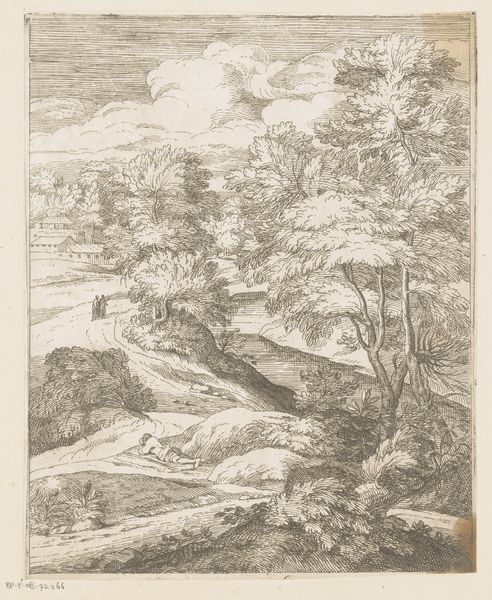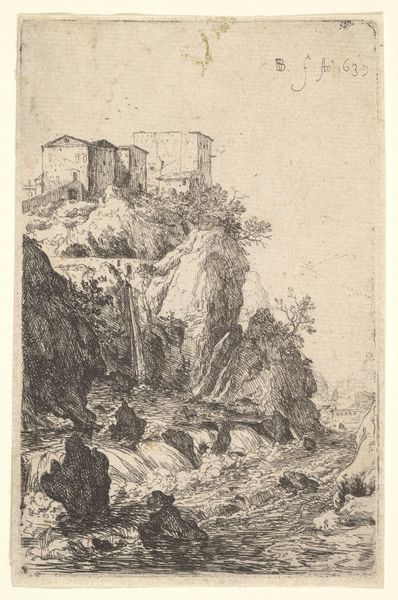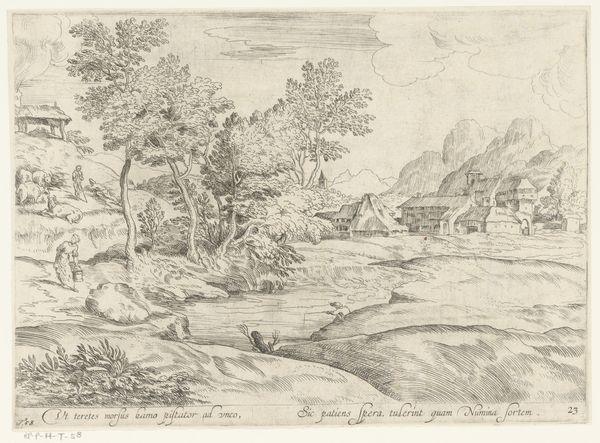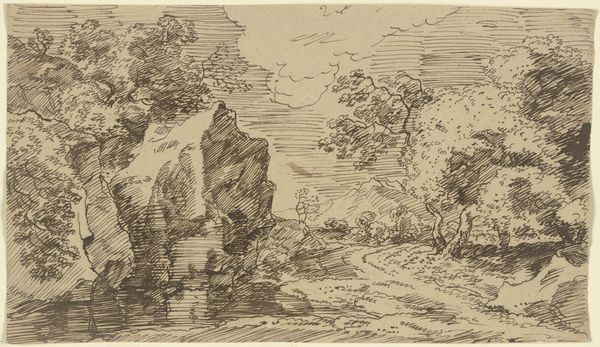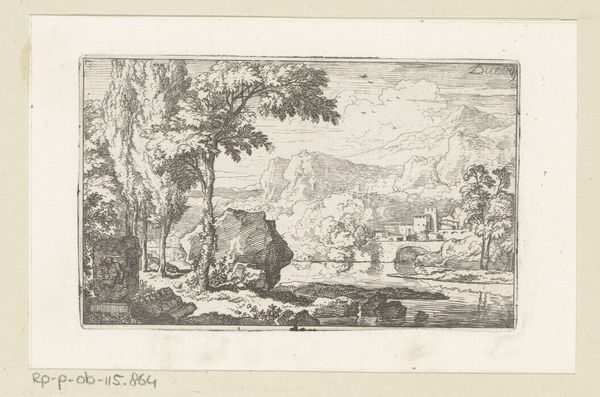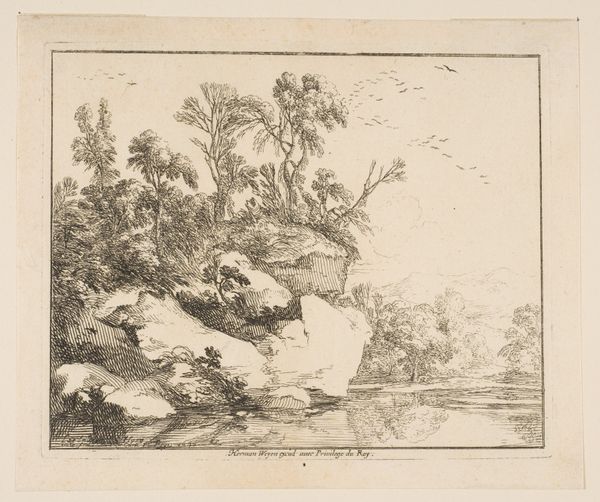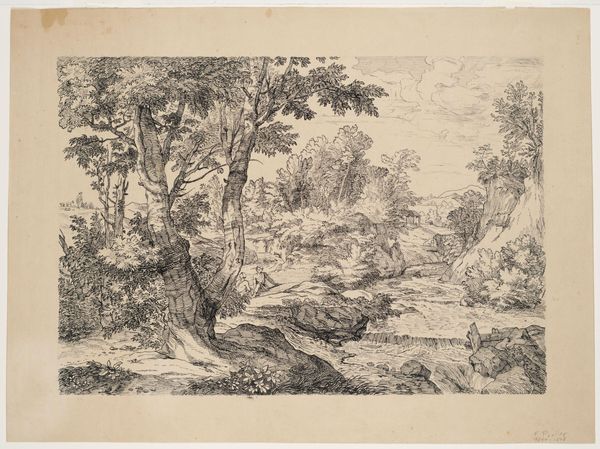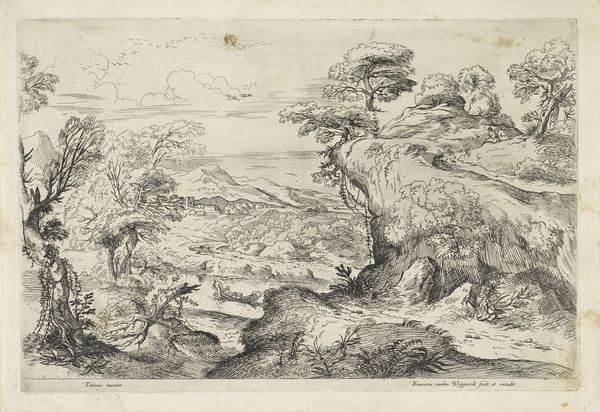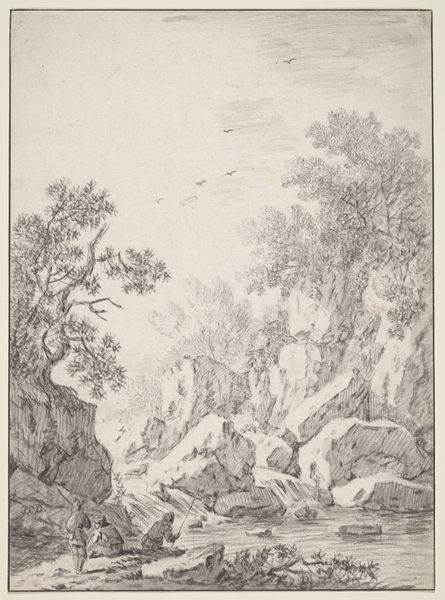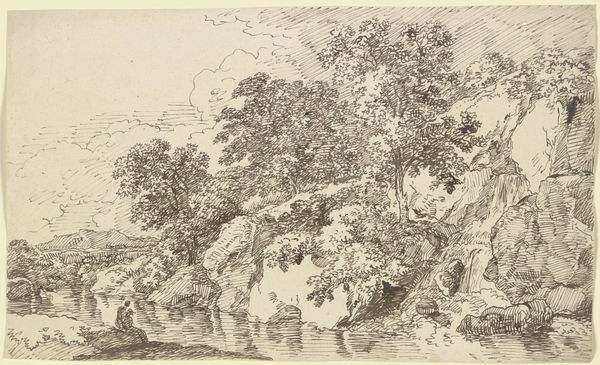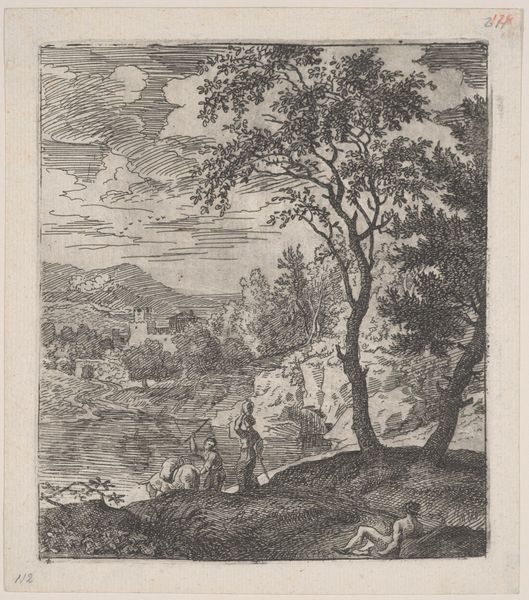
drawing, ink
#
drawing
#
baroque
#
pen sketch
#
pencil sketch
#
landscape
#
personal sketchbook
#
ink
#
sketchwork
#
ink drawing experimentation
#
pen-ink sketch
#
pen work
#
sketchbook drawing
#
history-painting
#
storyboard and sketchbook work
#
sketchbook art
Dimensions: height 279 mm, width 209 mm
Copyright: Rijks Museum: Open Domain
Editor: So, here we have Jean Pesne's "Landschap met barmhartige Samaritaan," a drawing from sometime between 1666 and 1695. It's an ink drawing of a landscape with figures in the foreground. The detail is amazing, and it’s very picturesque. What can you tell us about its context? Curator: Well, considering the date and the biblical subject, it's crucial to understand how religious narratives were being visually deployed at the time. The story of the Good Samaritan was a popular one, often used to promote charity, of course, but also as a reflection of social responsibility, or even, depending on the context, of tensions. Were different social groups fulfilling their duties to one another? Editor: That’s a great point. So, beyond the surface narrative of charity, you're suggesting this piece could also reflect some societal anxieties? Curator: Exactly. Landscape art wasn't just about pretty scenery. It could be a vehicle to subtly critique social structures or, alternatively, reinforce existing hierarchies. It also played into contemporary notions of the public and private sphere. I'd also wonder how much this specific interpretation of the Bible influenced or reflected the colonial attitudes towards the places where the original stories of the Bible are set. What is striking to you about its composition and style? Editor: It feels both meticulously planned and very free in terms of execution – what would you consider baroque elements in this image? Curator: The landscape serves not only as background for the biblical theme but, possibly, as an independent representation of moral considerations about baroque ideals. In a cultural climate where representation and public perception was increasingly mediatized and theatrical. It is very telling how the artist’s choice emphasizes personal morals over organized faith and public institutions, or, at the very least, their problematic relations. Editor: I never thought of it that way! It makes you think about the messages artists are trying to convey beyond just the obvious story. Thanks for helping me delve into these subtleties! Curator: My pleasure. Hopefully, more people will see the public role of art in these Baroque ink works!
Comments
No comments
Be the first to comment and join the conversation on the ultimate creative platform.
